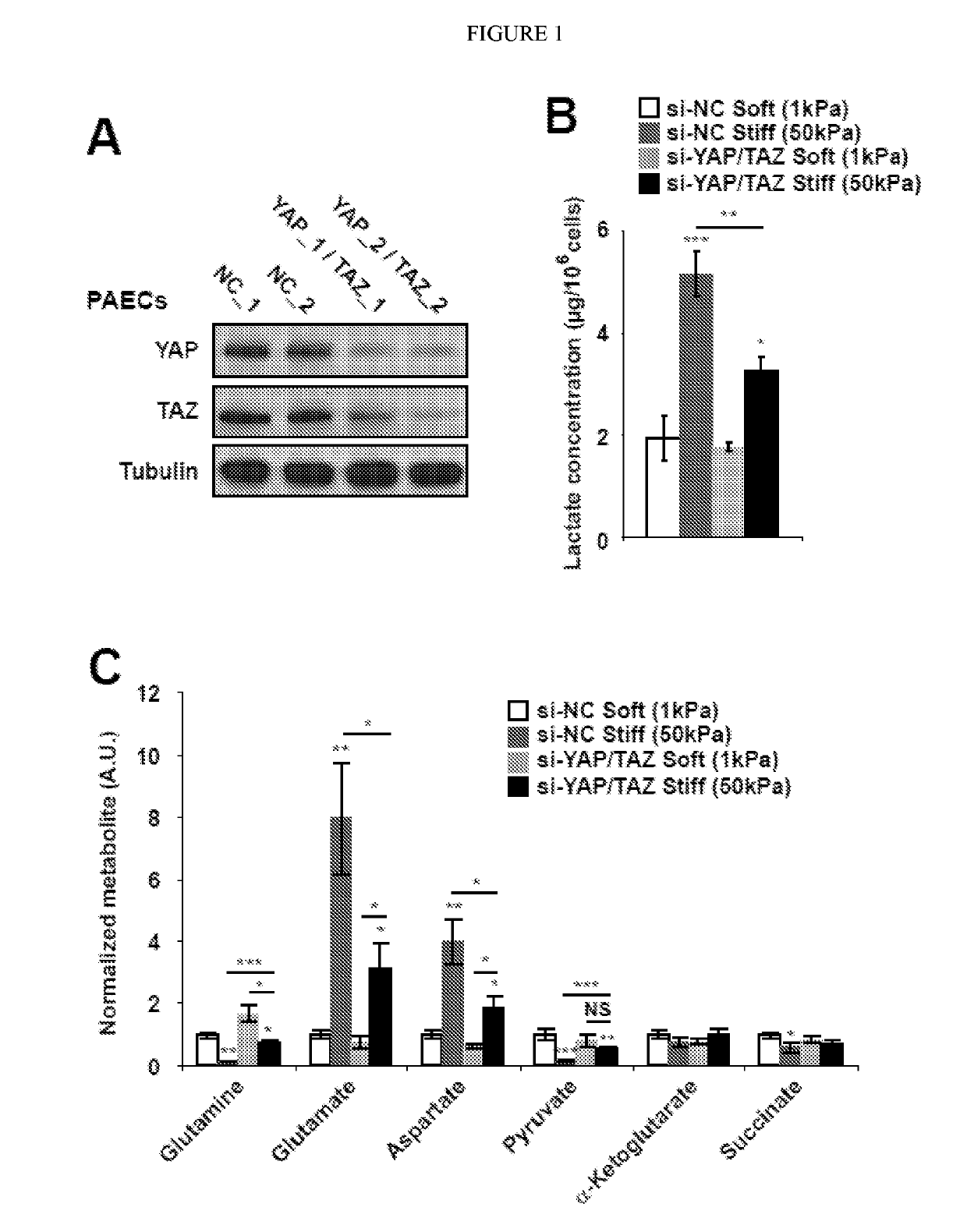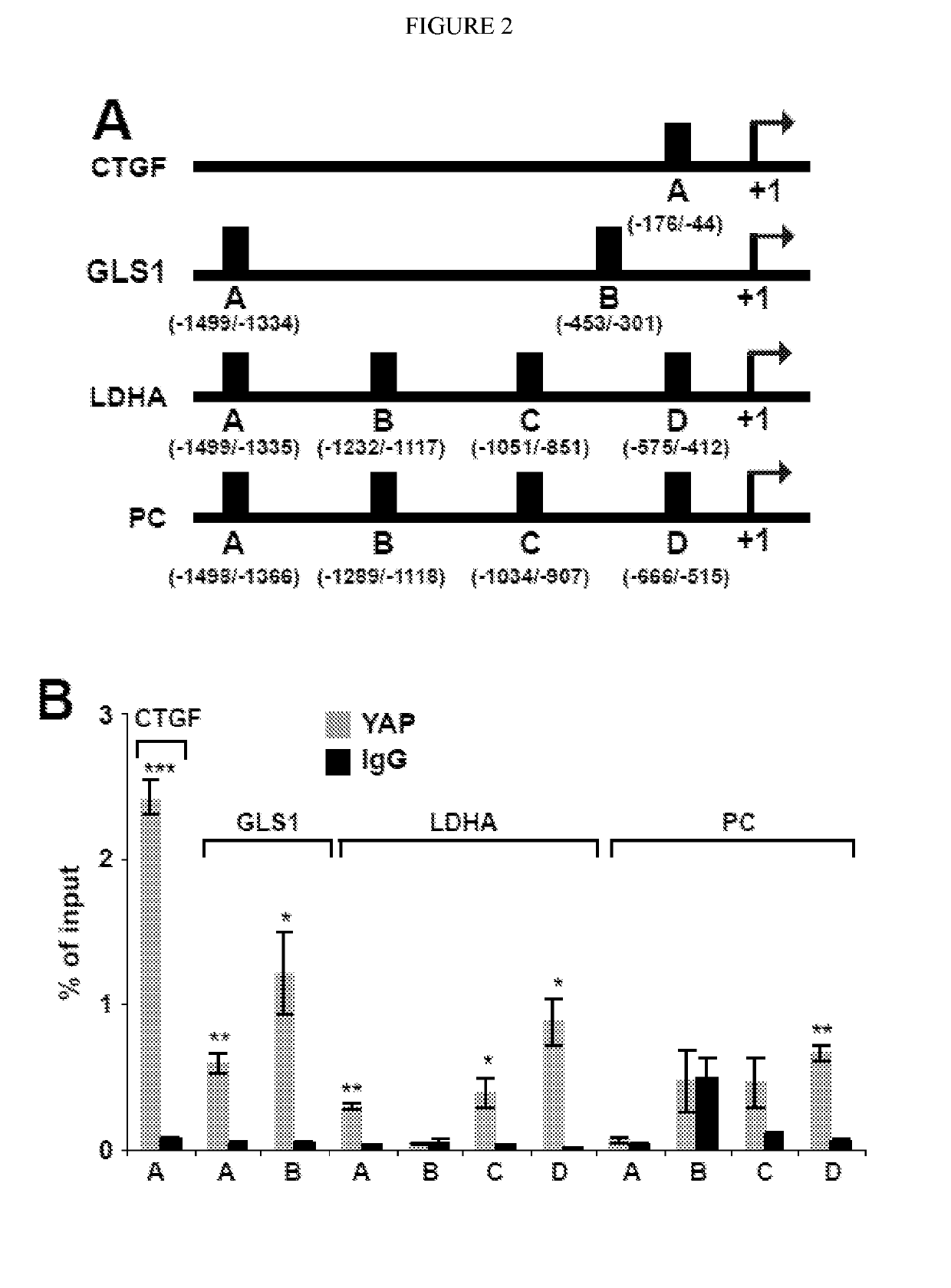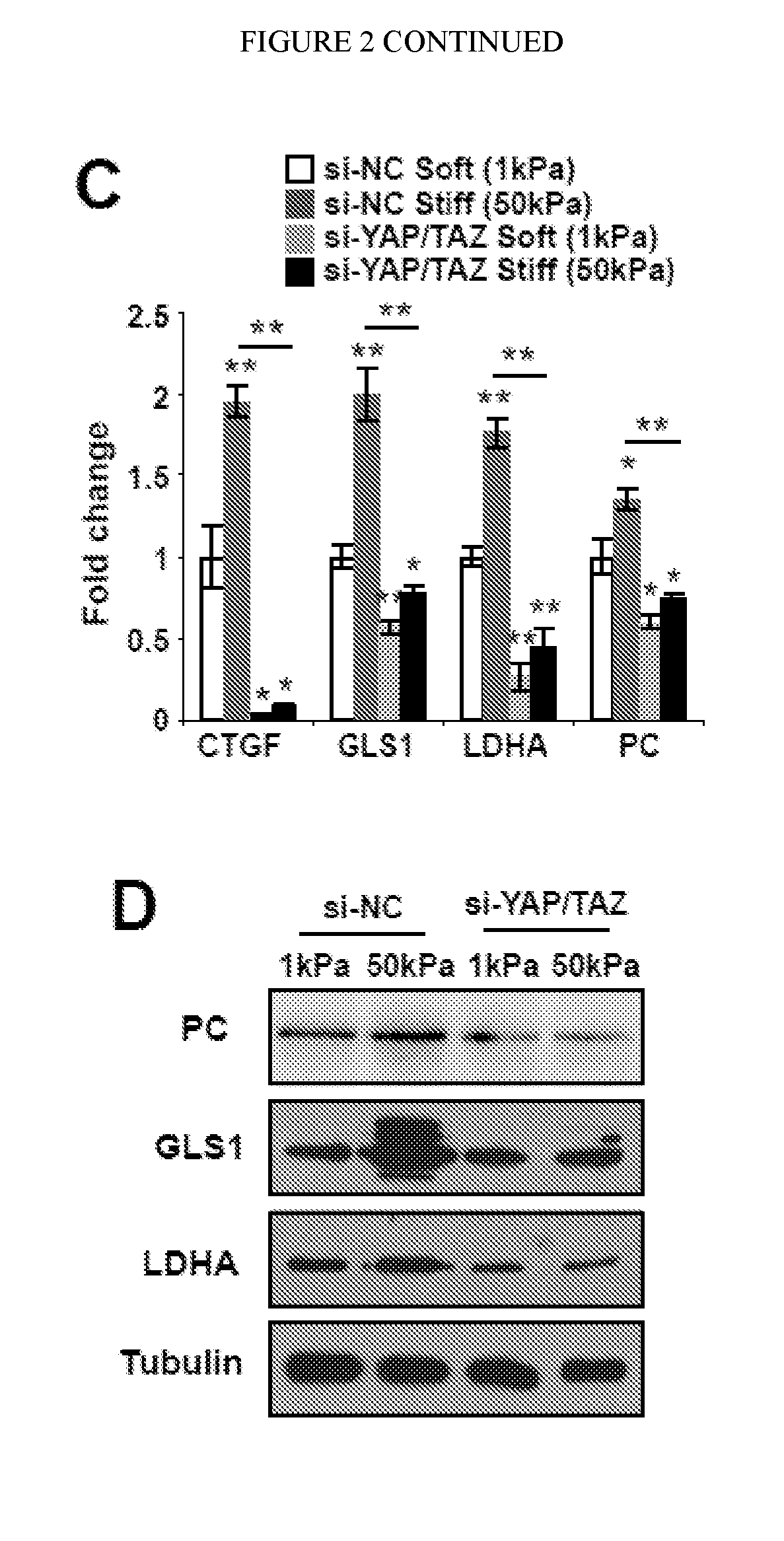Compositions and methods for treating pulmonary vascular disease
a technology for pulmonary vascular disease and compositions, applied in the field of compositions and methods for treating pulmonary vascular disease, can solve the problem that the amount of increased glycolysis alone is insufficient to meet the total metabolic demands of such proliferating cells, and achieves the effect of increasing the amount of increased glycolysis
- Summary
- Abstract
- Description
- Claims
- Application Information
AI Technical Summary
Benefits of technology
Problems solved by technology
Method used
Image
Examples
example 1
Experimental Procedures
Cell Culture and Reagents
[0084]HEK293T cells (American Type Culture Collection) were cultivated in DMEM containing 10% fetal bovine serum (FBS). Primary human pulmonary arterial endothelial cells (PAECs) were grown in EGM-2 cell culture media (Lonza), and experiments were performed at passages 3 to 6. Primary human pulmonary arterial smooth muscle cells (PASMCs) were cultured in SmGM-2 cell culture media (Lonza), and experiments were performed at passages 3 to 9. Inhibitors of GLS1 (2, 3): BPTES (Bis-2-(5-phenylacetamido-1,3,4-thiadiazol-2-yl)ethyl sulphide), DON (6-Diazo-5-oxo-L-norleucine), and C968 (Glutaminase Inhibitor, Compound 968, 5-(3-Bromo-4-(dimethylamino)phenyl)-2,2-dimethyl-2,3,5,6-tetrahydrobenzo[a]phenanthridin-4(1H)-one) were purchased from Sigma-Aldrich and used at concentration of 10 M, 5 M and 10 M respectively. Glutamate was purchased from Sigma Aldrich and used at concentration of 2 mM. Aspartate was purchased from Sigma Aldrich and used a...
example 2
Mechanical Stimuli Regulate Metabolic Reprogramming in Pulmonary Vascular Endothelial and Smooth Muscle Cells
[0116]To determine whether mechanical / physical cues conveyed by ECM stiffness modulate vascular cell metabolism, a metabolic screening of pulmonary vascular cell types was performed by culture on soft or stiff matrix. Via extracellular flux analysis, oxygen consumption rate (OCR) and extracellular acidification rate (a surrogate marker of glycolysis) were assessed in pulmonary arterial endothelial cells (PAECs). As reflected by extracellular acidification rate quantification, ECM stiffness increased basal glycolysis while concomitantly decreasing glycolytic reserve capacity, calculated as the difference between oligomycin A-induced extracellular acidification rate and basal extracellular acidification rate (data not shown). Thus, cells on stiff matrix displayed a glycolytic flux closer to their maximal rate compared with cells on soft matrix. Alternatively, increased ECM stif...
example 3
ECM Stiffness Depends on YAP / TAZ to Control Metabolism
[0118]Given prior findings that YAP and TAZ act as mechanosensors in pulmonary vascular cells, it was determined whether YAP / TAZ are important in modulating the consequences of ECM stiffening on metabolic reprogramming. In PAECs in stiff matrix, YAP / TAZ knockdown (FIG. 2A) decreased lactate / pyruvate ratio (FIG. 2B), reflecting its control over glycolysis. YAP / TAZ knockdown also blunted the anaplerotic actions of stiff ECM on glutamine, glutamate, and aspartate production (FIG. 2C). Correspondingly, mitochondrial membrane potential was also sustained during YAP / TAZ knockdown in stiff matrix (data not shown). Conversely, in PAECs grown in soft matrix, stable expression of YAP (pYAP) increased lactate / pyruvate ratio; decreased glutamine and increased glutamate and aspartate; and consequently, decreased mitochondrial membrane potential (data not shown). Notably, the same pathways of glycolysis and glutaminolysis mechanically controll...
PUM
| Property | Measurement | Unit |
|---|---|---|
| diameter | aaaaa | aaaaa |
| pH | aaaaa | aaaaa |
| pH | aaaaa | aaaaa |
Abstract
Description
Claims
Application Information
 Login to View More
Login to View More - R&D
- Intellectual Property
- Life Sciences
- Materials
- Tech Scout
- Unparalleled Data Quality
- Higher Quality Content
- 60% Fewer Hallucinations
Browse by: Latest US Patents, China's latest patents, Technical Efficacy Thesaurus, Application Domain, Technology Topic, Popular Technical Reports.
© 2025 PatSnap. All rights reserved.Legal|Privacy policy|Modern Slavery Act Transparency Statement|Sitemap|About US| Contact US: help@patsnap.com



